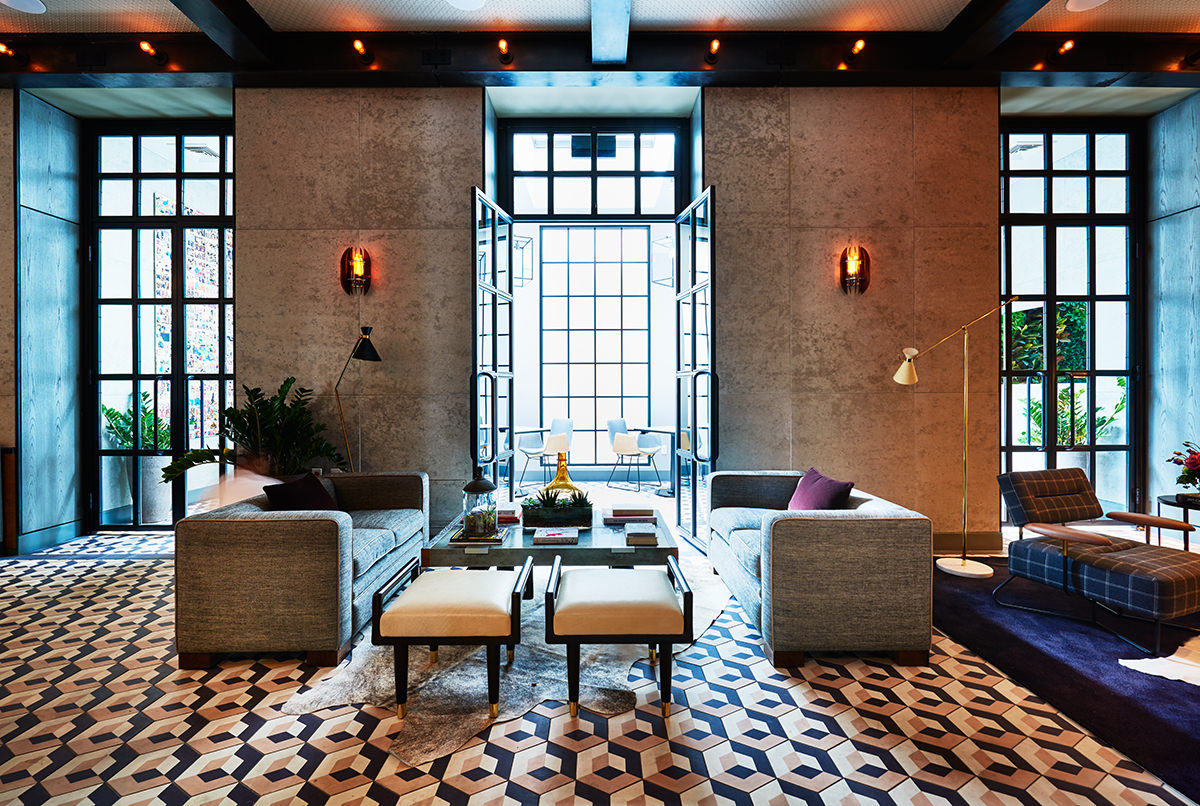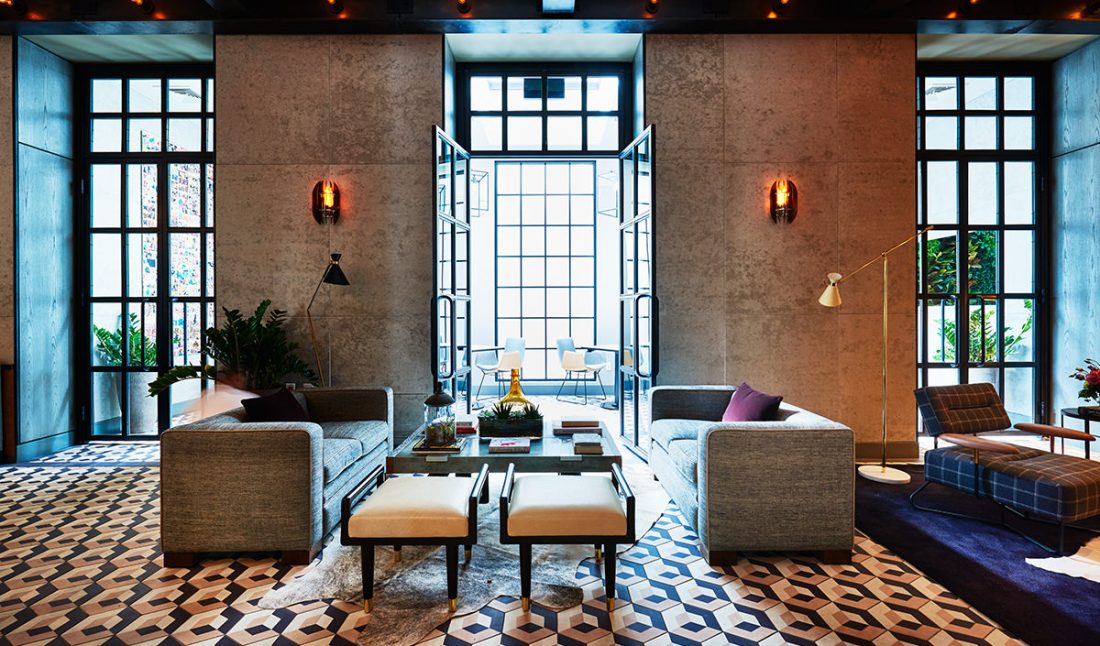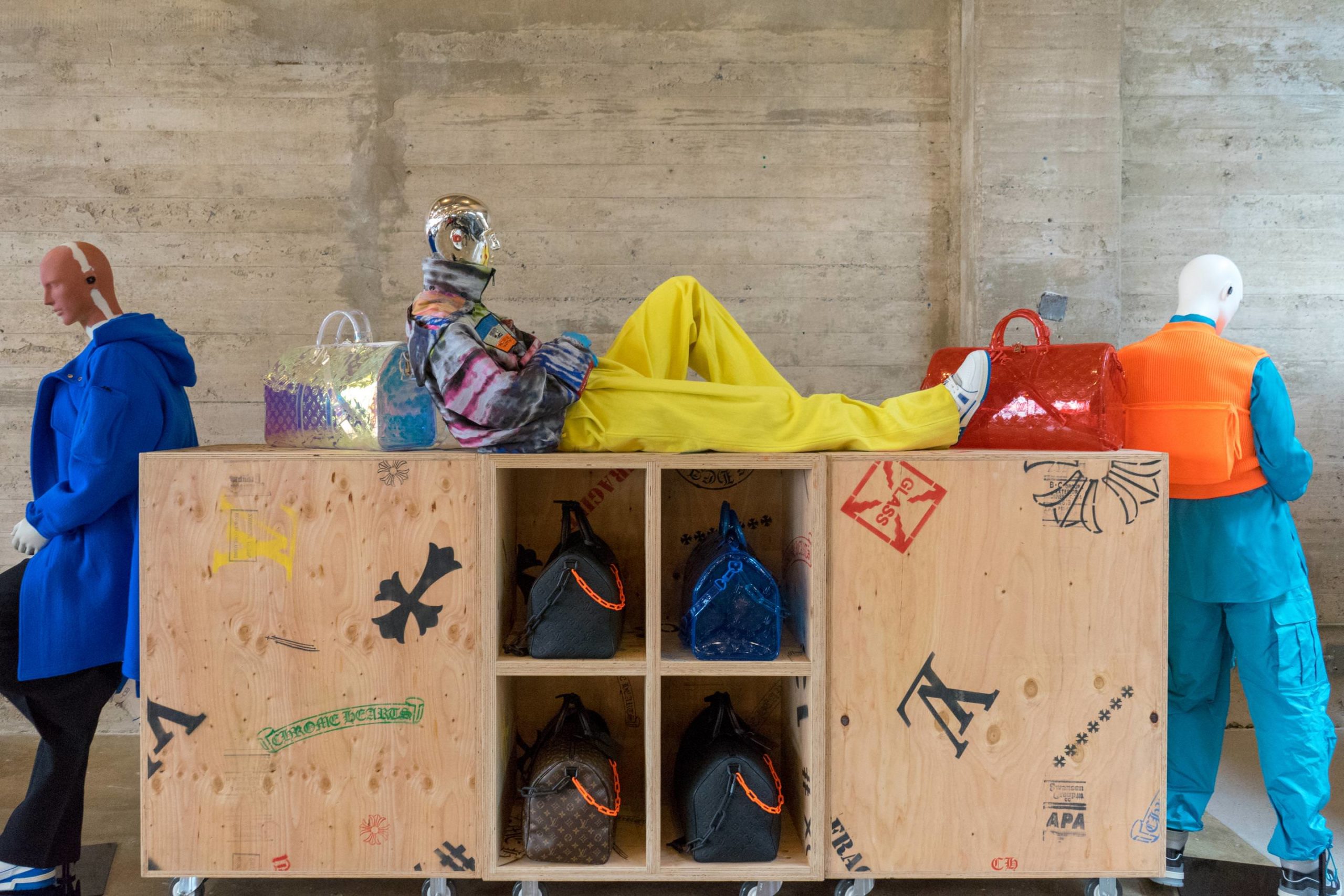“Disappear here,” urged the key handed over in the newly outfitted Sixty Soho lobby, with lights so dim and warm, hardly anyone could resist melting into an evening there, beckoned by the David Linely leather couches and outré displayed art works, collected by its hotelier Jason Pomeranc. At 42, the hospitality kingpin has amassed quite a personal collection of art, especially from those whom he “rose the ranks with,” in particular, Ryan McGinley and Will Cotton. Both of the downtown generation’s instantly recognizable productions—a writhing nude by photographer McGinley and whipped-up portraits by Cotton—are prominently displayed in the lobby, along with stacks upon stacks of monographs. Indeed this is New York, a literate city, and in case somehow your Kindle or paperback has gone astray en route, Sixty Soho soars with towers of books both in the public spaces and behind the private doors. Art and books, and books about art, and hey, even art about books. Ascending the velvet-carpeted staircase to the reception and bar on the building’s second floor, the hotel’s largest work in its collection hangs: Harland Miller’s The Next Life’s on Me. “The creative communities who we speak to appreciate the more layered and complex ways we present design. Adding a layer of personality with the art was part of that,” said Pomeranc.
In Soho’s terroir, cool art was king—literally, Minimalism lived between Prince and Spring streets, what with Donald Judd and Gordon Matta-Clark having headquarters here. “The hotel had taken on the personality of the neighborhood and a local fabric,” said Pomeranc, nodding to the neighborhood so steeped in art history that even the Soho aesthetic, a millennial style embodied by many of Pomeranc’s holdings like the former Thompson Hotels, carried the sleek and steely lines of Minimalism’s straight sides. Yet, times have changed, and the renovation, in his words, came about for “it was time to inject the space with a new personality—more than just couches and floors.” And so he tapped Tara Bernerd, who runs a Belgravia chic firm in London to oversee its “feel of a residential space, where the public space is more like a living room rather than the traditional concept of a hotel lobby,” as Pomeranc explained.
 Courtesy of SIXTY SOHO
Courtesy of SIXTY SOHO
The rooms are, indeed, dipped in discretion, with hallways dark and moody, and bellhops who avert their eyes, hinting any secret is safe. The hushed boudoirs were no different—even thankfully including a door hiding the bathroom. Platform beds, velvet couches, hip-high desks . . . work or play (with someone else) certainly find comfort in here. And since stories are essential to one’s experience anywhere but especially New York, the downstairs Gordon Bar already draws a lively crowd of the sort of local residents corral with friends from international locales. A Greer Patterson wall-mounted sculpture of a smiley face with X and O for eyes sets the tone. With delightfully dizzying geometric travertine-looking floors, and plenty of mid-century settees and low-sitting ottomans, the room can certainly host throngs of sexy strangers—which, like the William Klein collage series on the walls, “integrates fashion into fine art. With art and fashion being such a big part of our audience, that tie in was important,” summed up Pomeranc.











